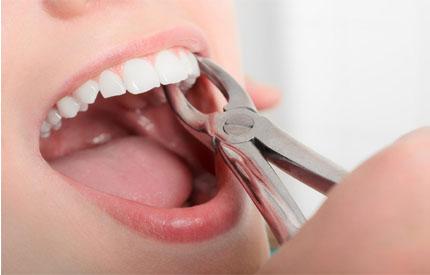Tooth extraction is a common dental procedure that involves removing a tooth from its socket in the jawbone. The procedure may be necessary for various reasons, such as severe decay, infection, gum disease, or overcrowding. If you’re looking for tooth extractions near me, the first step is to find a reputable dental clinic or oral surgeon in your area.
What Are Tooth Extractions?
Tooth extraction is a dental procedure that involves the removal of a tooth from its socket in the bone. This procedure is typically performed by a dentist or oral surgeon, and it may involve the extraction of one or more teeth, depending on the patient’s specific dental needs.
What Are Dental Implants?
Dental implants are artificial tooth roots that are placed in the jawbone to support a replacement tooth or bridge. They are a popular and effective option for replacing missing teeth and restoring a person’s smile. If you’re looking for implants near me, the first step is to find a reputable dental clinic or oral surgeon who specializes in dental implants.
· Tooth Extraction Procedure
A tooth extraction is a relatively simple procedure that can usually be completed in under an hour. The actual length of the procedure will depend on several factors, such as the location of the tooth, the complexity of the extraction, and whether the tooth is impacted or not. Here is a general overview of what you can expect during a tooth extraction procedure:
- Numbing the Area: Before the procedure, your dentist will numb the area around the tooth with a local anesthetic. This will prevent you from feeling any pain during the extraction.
- Loosening the Tooth: Once the area is numb, your dentist will use a special tool to loosen the tooth from its socket in the jawbone. You may feel some pressure during this part of the procedure, but you should not feel any pain.
- Removing the Tooth: Once the tooth is loosened, your dentist will use forceps to gently remove it from the socket. If the tooth is impacted, your dentist may need to make an incision in the gum to access it.
- Stopping the Bleeding: After the tooth is removed, your dentist will place gauze over the socket and ask you to bite down to help stop the bleeding.
- Closing the Socket: In some cases, your dentist may need to close the socket with stitches. These stitches will dissolve on their own over time.
- Aftercare: Your dentist will provide you with instructions on how to care for your mouth after the extraction. This may include avoiding certain foods, taking pain medication, and using ice packs to reduce swelling.
· Preparing for a Tooth Extraction
Before your tooth extraction procedure, there are several things you can do to prepare:
- Talk to Your Dentist: It’s important to let your dentist know if you are taking any medications or have any medical conditions that could affect the procedure.
- Arrange for a Ride Home: You will not be able to drive after the procedure, so make sure you arrange for a ride home.
- Wear Comfortable Clothing: Wear comfortable, loose-fitting clothing to the appointment. Avoid wearing jewelry or anything that could get in the way during the procedure.
- Avoid Eating or Drinking: Your dentist may ask you to avoid eating or drinking for a certain amount of time before the procedure. Follow their instructions carefully.
- Practice Good Oral Hygiene: Brush and floss your teeth before the procedure to ensure your mouth is clean and healthy.
· Aftercare for a Tooth Extraction
After the tooth extraction procedure, it’s important to take care of your mouth to ensure proper healing. Here are some tips to follow:
- Bite Down on Gauze: Keep biting down on the gauze placed over the socket for at least 30 minutes after the procedure.
- Use Ice Packs: Apply ice packs to your face for 10 minutes at a time to reduce swelling.
- Take Pain Medication: Your dentist may prescribe pain medication to help manage any discomfort you may experience after the procedure. Follow their instructions carefully and only take medication as directed.
- Avoid Certain Foods: Your dentist may recommend that you avoid certain foods, such as hot, spicy, or crunchy foods, for a few days after the procedure. Stick to soft foods that are easy to chew and swallow.
- Rinse with Salt Water: After 24 hours, you can start rinsing your mouth with salt water to help keep the socket clean and promote healing.
- Avoid Smoking: Smoking can delay the healing process and increase your risk of complications, so it’s best to avoid smoking for at least 24 hours after the procedure.
- Attend Follow-Up Appointments: Your dentist may schedule a follow-up appointment to check on your progress and make sure the socket is healing properly. It’s important to attend this appointment to ensure proper healing.
Conclusion
In conclusion, a tooth extraction is a relatively simple and straightforward procedure that can be completed in under an hour. Before the procedure, your dentist will numb the area around the tooth and use special tools to loosen and remove the tooth. After the procedure, it’s important to follow your dentist’s instructions for aftercare to ensure proper healing. By taking care of your mouth after the procedure, you can ensure a quick and smooth recovery. If you are in need of a tooth extraction, be sure to consult with your dentist to discuss your options and make a plan for your procedure.
